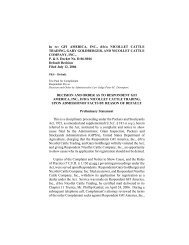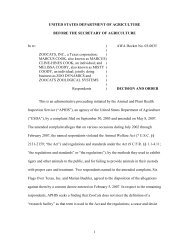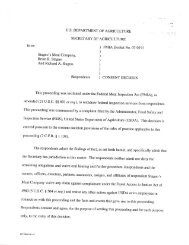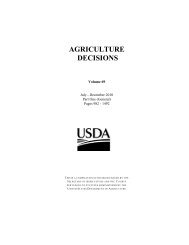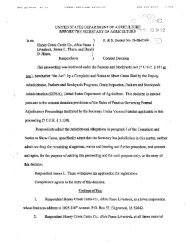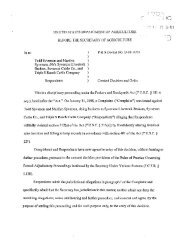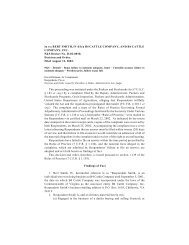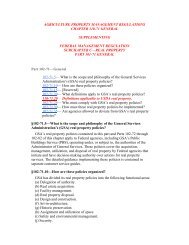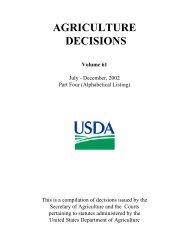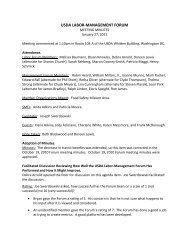Green Information Technology Strategic Plan - Departmental ...
Green Information Technology Strategic Plan - Departmental ...
Green Information Technology Strategic Plan - Departmental ...
You also want an ePaper? Increase the reach of your titles
YUMPU automatically turns print PDFs into web optimized ePapers that Google loves.
8.4 <strong>Green</strong> Buildings<br />
Faxing documentation will be simplified. E-faxing<br />
technology currently exists to minimize the use of paper<br />
products 12 . As technology further develops, the need for<br />
paper faxes will diminish. Email and digital documents<br />
have become the hub and backbone for the business place;<br />
papers get lost in the shuffle as documents are used, saved,<br />
and retrieved from electronic platforms.<br />
Computers that every employee uses are also crucial parts of<br />
ensuring we maximize our green facilities and minimize our<br />
foot print. Turning off screen savers, making backgrounds<br />
black and ensuring sleep mode is turned on at a shorter<br />
interval than the manufacturers default will ensure lower<br />
energy usage for the computer and the monitors. We want<br />
to instill in our people the idea of always available not always<br />
on 13 . Utilizing flat panel displays will also cut the use of<br />
energy. Flat panel displays utilize, on average 33% less<br />
energy than traditional monitors 14 .<br />
—Water<br />
In the future, USDA will incorporate complete recycling programs for all IT products.<br />
When the average consumer thinks about water savings,<br />
immediately their attention focuses on the ideas of auto<br />
shut-off water faucets and conserving consumption by<br />
installing newer and more updated toilet facilities that use<br />
low flow technology. But that technology has been mastered.<br />
It is time to move on and focus on the next task of water<br />
conservation. How can we utilize the technology we have<br />
today and that of future developments to further our water<br />
savings? Many people lose sight of water efficiency when<br />
thinking green 15 , but it could quite possibly be classified as<br />
our most precious resource. While all current technological<br />
advances are in place for water efficiency, there is still more<br />
to be seen with the advent of future technology and the idea<br />
of the self-sustaining building.<br />
Grey water processing will be one of the biggest contributing<br />
factors as the world develops into a more green and efficient<br />
community. Processing of grey water that makes up sinks,<br />
tubs and drainage will eventually be the norm in each<br />
building. This water can be collected and processed into<br />
a cleaner form that, while unable to be used for human<br />
consumption, will definitely decrease water usage while<br />
conducting landscaping and gardening of facilities. This plan<br />
has with it a two-fold benefit; not only are we able to lower<br />
the strain we are putting on our water resources, in turn, the<br />
Supporting Environmentally Responsible <strong>Technology</strong> at USDA<br />
processing facilities and septic tanks also have less to process.<br />
This planning and forethought will lead to construction and<br />
design to focus on efficiency while maintaining pleasing<br />
aesthetics.<br />
In order to achieve this goal, we must account for the<br />
technology necessary to achieve these requirements. The<br />
development of sensor technology to gauge water needs<br />
and use will become critical to the structure of this plan.<br />
Maximizing the water utilized will revolve around sensing<br />
rain water, drying soil and need for each plant within its<br />
environment. Currently, USDA uses water to cool its large<br />
facilities and data centers, which has become an efficient way<br />
to regulate temperatures in buildings.<br />
—Waste<br />
Recycling is one of the simplest and well known forms of<br />
energy efficiency and reducing waste, but this form goes<br />
outside the idea of newspapers and printing paper. In the<br />
information technology field, there are forms of recycling<br />
that span the gamut of new ideas and resource management,<br />
starting simply with one of the quickest and most quickly<br />
utilized products of possible recycling, the print cartridge.<br />
Recycling these products will inevitably reduce the number<br />
of items and toxins in land fills. In the future, USDA<br />
will incorporate complete recycling programs for all IT<br />
products.<br />
—Indoor Air Quality<br />
Indirect costs can be significant in the area of indoor<br />
environmental quality, which focuses on thermal comfort,<br />
acoustical quality, visual comfort and indoor air quality<br />
(IAQ). Occupant health and comfort is directly associated<br />
with operational costs in terms of increased productivity,<br />
decreased absenteeism, reduced health care claims and<br />
minimized remediation. While these benefits may be more<br />
difficult to quantify than water conservation or energy<br />
efficiency in terms of cost savings, IAQ does have significant<br />
and measurable financial benefits 16 .<br />
In order to maximize the priorities of high quality of<br />
air while maintaining low energy costs, Agencies must<br />
incorporate the technology behind the buildings that<br />
57




